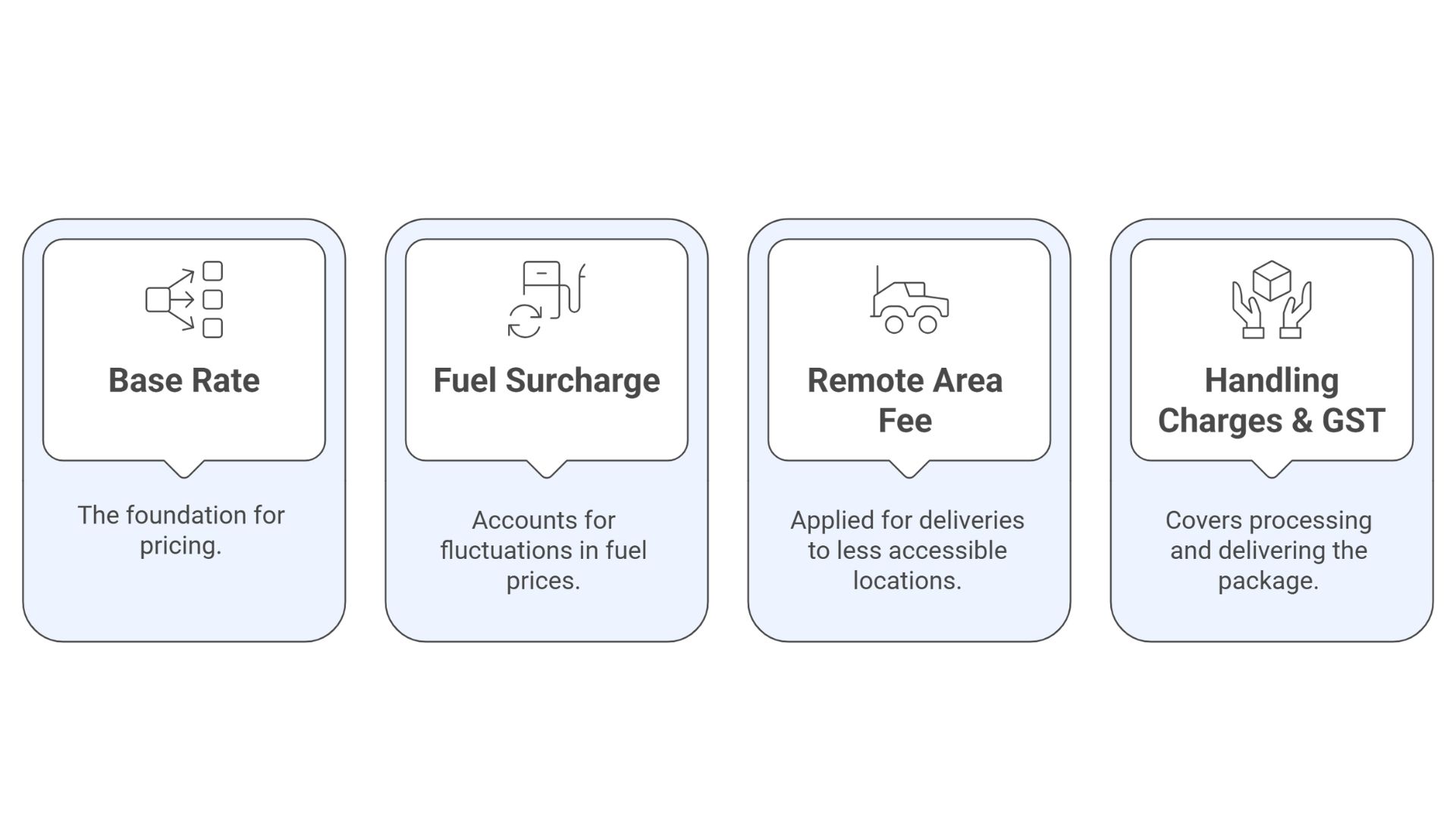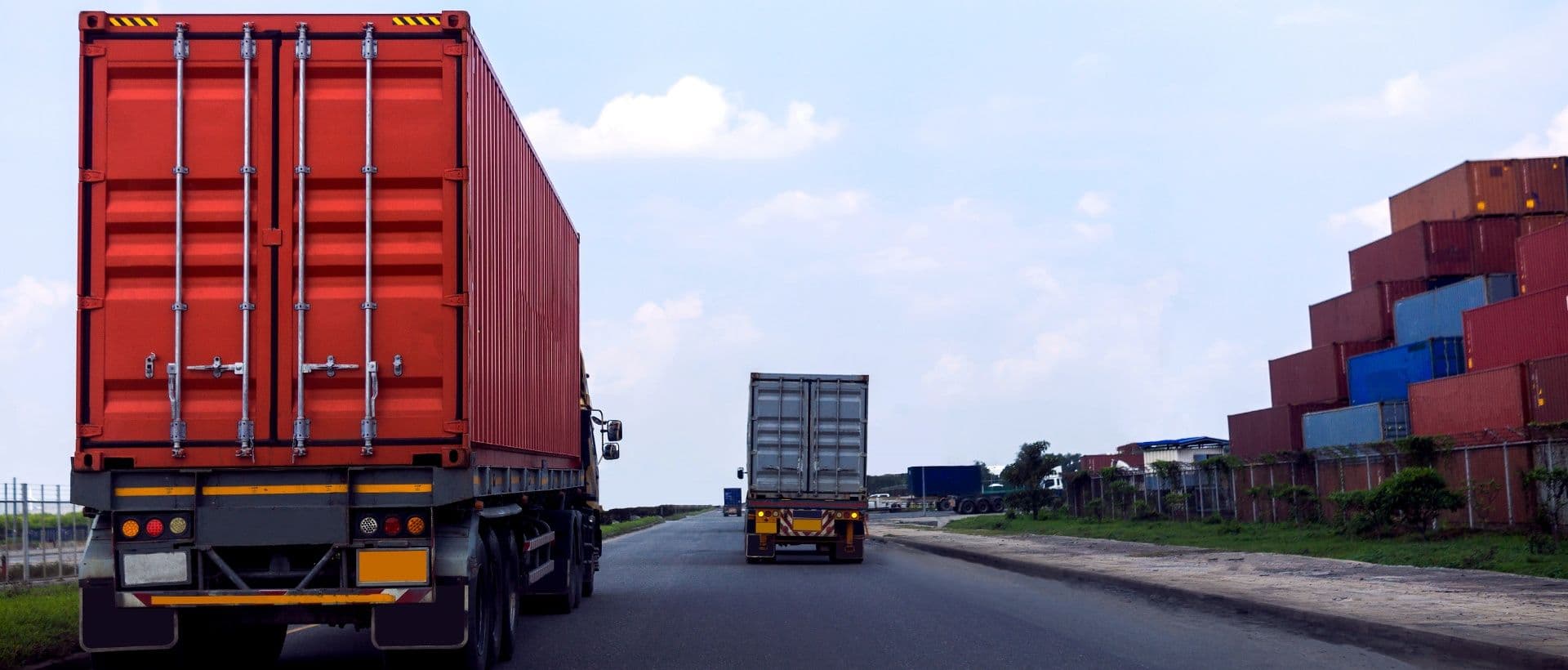
Courier Charges in India – Complete Guide to Shipping Costs & Rate Comparison (2025)
November 08, 2025
AAJ Swift

You may not believe it, but the courier industry in India has expanded rapidly. The numbers say that it crossed a jaw-dropping ₹50,000 crore mark by the end of 2024. All this is primarily due to the rapid popularity of the eCommerce industry and the popularity of direct-to-consumer products.
And if you look a little closely, you'll see what we're trying to tell you. Everyone is shipping something, from small-town sellers and Instagram boutiques to corporate vendors. And judging by how fast it's growing, these numbers could touch ₹65,000 crore as cross-border and B2B shipments expand by the end of this year.
But even with the popularity of the courier industry, the courier costs tend to make people frown. Courier charges in India have an effect on profit margins directly on businesses. If you hear of small shop owners losing business because they didn't check which delivery was cheaper, it is actually more common than you think. Understanding what makes up those courier rates isn't just logical; it's business survival, so let's get right into it.
What Are Courier Charges?
Courier costs or charges refer to the money you pay to transport your goods from place to place. They cover more than fuel and distance. There's an entire structure that goes into place in that final figure.
Courier vs. Freight Charges
Courier services deal with small to medium fast-moving consumer items, small or personal parcels. On the other hand, freight refers to bulk or palletized goods transported by land, sea, or air. Freight forwarding is generally priced on volumetric weight or per ton, while courier charges are often based on cost per kilogram or per gram.
Why Courier Charges Matter
First of all, let's tell you that courier costs aren't just numbers in a receipt. They influence a lot of factors like price, customer reviews, and the overall brand image. Not convinced? Let's break it down. So imagine a buyer eagerly waiting for their parcel. Their shipment was delayed because the seller picked a cheaper and slower option. No one likes to wait, even if you saved a buck, you lose credibility because of slow delivery. Understanding how courier charges in India are like will help you understand and negotiate for better charges. That would help the courier industry grow faster as well.
Key Components of Courier Fees

Here's what makes up a courier bill:
- Base Rate: The starting price for a shipment, often depending on the weight and delivery zone.
- Fuel Surcharge: Adjusts with changing diesel or aviation fuel costs.
- Remote Area Fee: Added if the destination lies outside major cities or standard service zones.
- GST & Handling Charges: Applicable government taxes and administrative fees.
How Courier Charges Are Calculated

In India, the courier rate is calculated based on a few important factors. You should be aware that even if transport companies use the same route, their final quotes may differ because of how they weigh these factors.
Weight-Based Pricing (Volumetric vs Actual Weight)
This is where many sellers get confused. Suppose your package weighs just 2 kg but takes up the space of a 5 kg box. The courier calculates based on "volumetric weight." If the volumetric weight is higher than the actual weight, that's what you're billed for.
Distance and Delivery Zone
It's well-known that longer routes tend to cost more, and most couriers in India are split based on delivery zones like Local, Regional, National, and Remote. That's why a Mumbai-to-Pune parcel is cheaper than a Mumbai-to-Siliguri one, even if they weigh the same.
Package Type and Dimensions
Fragile or oversize items need special handling, like extra padding, temperature control, or liability coverage. Those add-ons increase the final courier cost.
Delivery Mode
Delivery speed decides price. Same-day couriers are costly but ideal for urgent deliveries. Express mode costs a little less yet offers next-day service in metros. Standard and economy transport modes work best for regular, non-urgent shipments.
Additional Factors
Fuel price trends, customs duties (for international), optional insurance, and COD handling fees all play their part. For domestic shipping, you may also notice FSC (Fuel Surcharge) or GST charges varying by provider.
Sample Calculation
Let's break down the courier charges for a small parcel from Delhi to Chennai:
- Base Rate: ₹60 (for first 500g)
- Weight: 2 kg (actual weight)
- Distance Rate: ₹12 per additional 500g × 3 = ₹36
- Fuel Surcharge: ₹10
- GST (18%): ₹17.28
So, Courier Charge = ₹60 + ₹36 + ₹10 + ₹17.28 = ₹123.28 total
Domestic Courier Charges in India per kg (2025 Rates)
The courier charges in India may change based on the provider, speed, and service zone. Below is a general overview based on early 2025 data from leading Indian couriers:
Table
Rates for bulky parcels or specialized cargo may differ. Always confirm weight slabs before finalizing a shipment.
International Courier Charges (2025 Overview)
Global shipments follow a different pricing logic. The entry cost is high due to customs and handling at airports. Approximate starting rates per kg (2025):
Table
Business accounts usually get a 10–20% discount on large monthly volumes.
How Businesses Can Optimize Courier Costs
Modern B2C and B2B logistics isn't just about shipping faster; it's about shipping smarter. Here's what sellers do:
- Partner with Courier Aggregators: Logistics Aggregator platforms like AAJ Swift give access to multiple courier partners at once, helping compare rates instantly.
- Use Bulk Shipping Discounts: Send parcels in PTL logistics or negotiate better slabs if you regularly ship over a fixed monthly volume.
- Work with 3PL and Fulfillment Providers: 3PL companies offering end-to-end logistics save time and reduce damaged shipments.
- Adopt Automated Shipping Software: Integrated systems calculate optimal courier rates, track shipments, and handle return requests with fewer errors.
Common Mistakes That Increase Your Courier Costs
Even experienced sellers stumble on these pitfalls:
- Ignoring volumetric weight calculations.
- Using oversized or unnecessary packaging.
- Failing to manage return logistics.
- Missing seasonal discounts or aggregator offers.
Something as small as switching to right-size boxes can cut courier costs by 5–8% instantly.
Conclusion
Courier charges in India are evolving as fast as customer expectations. In 2025, efficiency and transparency will drive how sellers choose their logistics partners. Understanding every layer of a courier rate, like base fee, fuel, zone, and taxes, helps keep control over costs and expectations alike.
At the end of the day, shipping isn't just about moving boxes; it's about building trust on the road. And the more you know about what shapes your courier costs, the smoother that road becomes for both your business and your customers.

